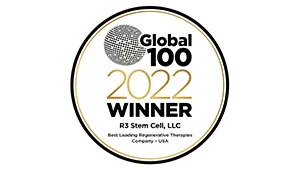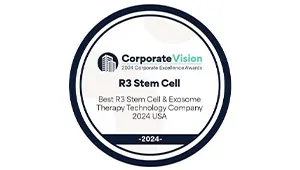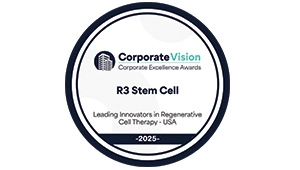Regenerative medicine is a relatively new and rapidly evolving field in the treatment of pain management, chronic disease, and injuries previously treatable with only surgery. Stem cell therapy has gained the attention of the scientific community over the past few decades, first with investigational research using embryonic stem cells and now with research focusing on amniotic tissue and amniotic fluid. The stem cells harvested from amniotic derived media are multipotent and able to differentiate themselves into a variety of tissue types. They are characterized by the ability to renew themselves through cell division and the potential to treat many previously untreatable conditions.
The Amniotic Membrane
The majority of research focuses on amniotic fluid and the stem cells that are harvested from this fluid. We must not forget about the stem cell rich amniotic membrane as well. The human amniotic membrane is made up of two types of stem cells: human amnion mesenchymal stromal cells and human amnion epithelial cells. Both of these types of cells display the same properties. When studied in vitro, they differentiate into mesodermal lineages.
The human amniotic membrane has also been used in plastic surgery for the treatment of wounds and corneal problems and in ophthalmology. In recent studies using human amniotic membranes, the tissue patch was successful in helping heal major leg wounds on a dog and to reduce scar adhesion and fibrosis at the site of surgery.
Interventional Pain Management
Human amniotic membranes are also at the forefront of interventional pain management. Using amniotic tissue to treat pain management is actually treating the root cause and not the symptoms, as most other treatments do. Studies concentrating on pain management therapy are investigating the role of amniotic tissue in the healing of tissue damage and inflammation.
One of the more successful studies involved injections of amniotic epithelial cells into an equine digital flexor tendon defect. The result was the growth of new collagen fibers to aid in the repair of that area. The stem cells acted as an activator to the injured or defective area so that growth factors are released and trigger collagen production, aiding in the healing process. Other studies have concentrated on injections of amniotic epithelial cells into the defective Achilles tendon of a sheep. The result was promotion of structural and mechanical recoveries during the early phase of healing.
Future Applications
The primary challenge right now is establishing an efficient method to generate amniotic cell cultures, eliminating the need for refrigeration and centrifugation of fresh samples. This would allow for a continuous supply of clonal lines from amniocentesis samples and birth harvests. Communication is another issue that amniotic derived tissue can solve. In studies where bone marrow derived stem cells were used to attempt to differentiate into another form of cell type, the tissue had to be guided to attempt this differentiation. With human amniotic cells, the communication between host cells and the grafts are pivotal in creating the healing process for damaged tissues.
One future application is using amniotic stem cells to treat babies with congenital heart defects. Although this research is still in the very early phases, it has the potential to treat thousands of babies who are born each year suffering from congenital heart defects. By treating this type of defect, the child would avoid multiple heart operations and the strong possibility of a transplant before the age of one. Research teams are looking at replacing the damaged cells or generating new tissue by augmenting the damaged heart. Researchers understand that the baby’s heart cells are functioning but the heart muscle developed abnormally for reasons unknown.












No Comments